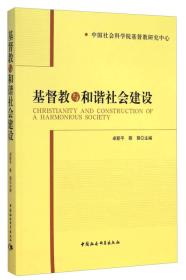
数字语音处理理论与应用
¥ 18.5 1.6折 ¥ 118 九品
仅1件
北京朝阳
认证卖家担保交易快速发货售后保障
作者[美]拉比纳、[美]谢弗 著
出版社电子工业出版社
出版时间2011-01
版次1
装帧平装
上书时间2024-10-02
- 最新上架
商品详情
- 品相描述:九品
图书标准信息
- 作者 [美]拉比纳、[美]谢弗 著
- 出版社 电子工业出版社
- 出版时间 2011-01
- 版次 1
- ISBN 9787121124099
- 定价 118.00元
- 装帧 平装
- 开本 16开
- 纸张 胶版纸
- 页数 1042页
- 字数 1484千字
- 正文语种 英语
- 原版书名 Theory and Applications of Digital Speech Processing
- 【内容简介】
-
《国外电子与通信教材系列:数字语音处理理论与应用(英文版)》是作者继1978年版经典教材digitalprocessingofspeechsignals之后的又一著作,《国外电子与通信教材系列:数字语音处理理论与应用(英文版)》除有简练精辟的基础知识介绍外,系统介绍了近30年来语音信号处理的新理论、新方法和在应用上的新进展。《国外电子与通信教材系列:数字语音处理理论与应用(英文版)》共14章,分四部分:第一部分介绍语音信号处理基础知识,主要包括数字信号处理基础、语音产生机理、(人的)听觉和听感知机理和声道中的声传播原理;第二部分介绍语音信号的时频域表示和分析;第三部分介绍语音参数估计算法;第四部分介绍语音信号处理的应用,主要包括语音编码、语音和音频信号的频域编、语音合成、语音识别和自然语言理解。
《国外电子与通信教材系列:数字语音处理理论与应用(英文版)》可供高等院校通信、电子、信息、计算机等专业作为研究生和本科生教材,也可以供有关科研和工程技术人员参考,是一本既有系统的基础理论讲解、又有最新研究前沿介绍并密切结合应用发展的教材。 - 【作者简介】
- LawrenceR.Rabiner,美国工程院和美国科学院院士,美国声学学会、IEEE、Bell实验室、AT&T会士,以及EtaKappaNu、SigmaXi、TauBetaPi等荣誉学会会员。曾担任美国声学学会副主席、IEEETrans.ASSP主编和IEEEProceedings编委会成员。其主要研究方向包括:通信、控制与信号处理、数字信号处理、数字语音处理、多媒体通信、多模态处理等。Rabiner教授于2002年从AT&T退休,随后担任Rutgers大学和加州大学圣巴巴拉分校的教授,以及Rutgers大学先进信息处理中心副主任。
- 【目录】
-
preface
chapter1introductiontodigitalspeechprocessing
1.1thespeechsignal
1.2thespeechstack
1.3applicationsofdigitalspeechprocessing
1.4commentonthereferences
1.5summary
chapter2reviewoffundamentalsofdigitalsignalprocessing
2.1introduction
2.2discrete-timesignalsandsystems
2.3transformrepresentationofsignalsandsystems
2.4fundamentalsofdigitalfilters
2.5sampling
2.6summary
problems
chapter3fundamentalsofhumanspeechproduction
3.1introduction
3.2theprocessofspeechproduction
3.3short-timefourierrepresentationofspeech
3.4acousticphonetics
3.5distinctivefeaturesofthephonemesofamericanenglish
3.6summary
problems
chapter4hearing,auditorymodels,andspeechperception
4.1introduction
4.2thespeechchain
4.3anatomyandfunctionoftheear
4.4theperceptionofsound
4.5auditorymodels
4.6humanspeechperceptionexperiments
4.7measurementofspeechqualityandintelligibility
4.8summary
problems
chapter5soundpropagationinthehumanvocaltract
5.1theacoustictheoryofspeechproduction
5.2losslesstubemodels
5.3digitalmodelsforsampledspeechsignals
5.4summary
problems
chapter6time-domainmethodsforspeechprocessing
6.1introduction
6.2short-timeanalysisofspeech
6.3short-timeenergyandshort-timemagnitude
6.4short-timezero-crossingrate
6.5theshort-timeautocorrelationfunction
6.6themodiedshort-timeautocorrelationfunction
6.7theshort-timeaveragemagnitudedifferencefunction
6.8summary
problems
chapter7frequency-domainrepresentations
7.1introduction
7.2discrete-timefourieranalysis
7.3short-timefourieranalysis
7.4spectrographicdisplays
7.5overlapadditionmethodofsynthesis
7.6filterbanksummationmethodofsynthesis
7.7time-decimatedfilterbanks
7.8two-channelfilterbanks
7.9implementationofthefbsmethodusingthefft
7.10olarevisited
7.11modicationsofthestft
7.12summary
problems
chapter8thecepstrumandhomomorphicspeechprocessing
8.1introduction
8.2homomorphicsystemsforconvolution
8.3homomorphicanalysisofthespeechmodel
8.4computingtheshort-timecepstrumandcomplexcepstrumofspeech
8.5homomorphicfilteringofnaturalspeech
8.6cepstrumanalysisofall-polemodels
8.7cepstrumdistancemeasures
8.8summary
problems
chapter9linearpredictiveanalysisofspeechsignals
9.1introduction
9.2basicprinciplesoflinearpredictiveanalysis
9.3computationofthegainforthemodel
9.4frequencydomaininterpretationsoflinearpredictiveanalysis
9.5solutionofthelpcequations
9.6thepredictionerrorsignal
9.7somepropertiesofthelpcpolynomiala(z)
9.8relationoflinearpredictiveanalysistolosslesstubemodels
9.9alternativerepresentationsofthelpparameters
9.10summary560problems
chapter10algorithmsforestimatingspeechparameters
10.1introduction
10.2mediansmoothingandspeechprocessing
10.3speech-background/silencediscrimination
10.4abayesianapproachtovoiced/unvoiced/silencedetection
10.5pitchperiodestimation(pitchdetection)
10.6formantestimation
10.7summary645problems
chapter11digitalcodingofspeechsignals
11.1introduction
11.2samplingspeechsignals
11.3astatisticalmodelforspeech
11.4instantaneousquantization
11.5adaptivequantization
11.6quantizingofspeechmodelparameters
11.7generaltheoryofdifferentialquantization
11.8deltamodulation
11.9differentialpcm(dpcm)
11.10enhancementsforadpcmcoders
11.11analysis-by-synthesisspeechcoders
11.12open-loopspeechcoders
11.13applicationsofspeechcoders
11.14summary819problems
chapter12frequency-domaincodingofspeechandaudio
12.1introduction
12.2historicalperspective
12.3subbandcoding
12.4adaptivetransformcoding
12.5aperceptionmodelforaudiocoding
12.6mpeg-1audiocodingstandard
12.7otheraudiocodingstandards
12.8summary894problems
chapter13text-to-speechsynthesismethods
13.1introduction
13.2textanalysis
13.3evolutionofspeechsynthesismethods
13.4earlyspeechsynthesisapproaches
13.5unitselectionmethods
13.6ttsfutureneeds
13.7visualtts
13.8summary947problems
chapter14automaticspeechrecognitionandnaturallanguageunderstanding
14.1introduction
14.2basicasrformulation
14.3overallspeechrecognitionprocess
14.4buildingaspeechrecognitionsystem
14.5thedecisionprocessesinasr
14.6step3:thesearchproblem
14.7simpleasrsystem:isolateddigitrecognition
14.8performanceevaluationofspeechrecognizers
14.9spokenlanguageunderstanding
14.10dialogmanagementandspokenlanguagegeneration
14.11userinterfaces
14.12multimodaluserinterfaces
14.13summary984problems
appendices
aspeechandaudioprocessingdemonstrations
bsolutionoffrequency-domaindifferentialequations
bibliography
index
点击展开
点击收起
— 没有更多了 —












以下为对购买帮助不大的评价